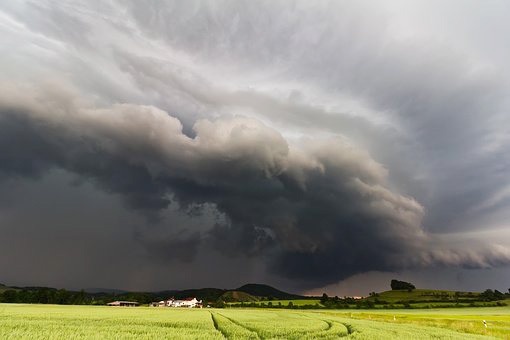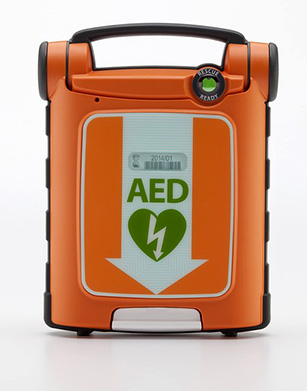A.D.ministration: Preparing a mobile emergency center
If you’ve been around athletics for a while, you know that emergencies occur — some small, and others of the larger variety. And, the key to dealing with unexpected occurrences is to be prepared for any and all unusual events.
 Can you plan for the unexpected? Sure, to a degree, and that’s really what you should do. For example, have you ever been caught by a sudden rain shower when you were out at a game? If you have, it probably caused you to store an extra umbrella, hat and rain gear in your office so that you were ready for the next event.
Can you plan for the unexpected? Sure, to a degree, and that’s really what you should do. For example, have you ever been caught by a sudden rain shower when you were out at a game? If you have, it probably caused you to store an extra umbrella, hat and rain gear in your office so that you were ready for the next event.
Ever since this little dilemma, I started to keep a whole host of things in my trunk to avert unexpected problems. The car trunk has become the athletic department’s Mobile Emergency Center. If I’m going out to one of our fields, my car is usually parked close to the event and, obviously, the car is how you travel to away contests. So, it has become quite natural to start stocking equipment and supplies in the trunk.
The 12 essentials
What are some items you might want to store in your trunk? The following have been essential staples for me.
1. A bag of extra clothes. When the weather suddenly gets cold or wet (and at this time of year, you never know what to expect), it sure is nice to have more sweatshirts, thermal underwear, socks and hats (knit and baseball caps) available to you. Extra layers and dry clothes are lifesavers.
2. A box of simple, basic tools. You never know when the sign at your refreshment stand needs attention or a part is loose on one of your goals. There is no time to submit a work order and wait for the repairs to be made. It’s always good to have a hammer, screwdrivers (Philips and flat head), pliers, scissors, utility knife and adjustable wrench.
3. Tape. Keep a variety of tapes with you including masking, duct and several roles of athletic tape. Coaches and athletic trainers don’t always plan ahead and may need a few rolls and, of course, masking and duct tape can make emergency repairs on almost everything.
4. Officials’ vouchers. When a coach forgets to take the payment vouchers to a game, you certainly don’t want to have to run back to your office. Always keep some extras on hand.
5. Contact information. For those with smart phones, contact information includes cell phone numbers or email addresses for official assigners, bus dispatchers, opponent athletic directors, coaching staffs, security, athletic trainer and any other vital personnel. Keeping this information in a folder in your car prevents many stressful situations and speeds up the notification of these important individuals.
6. Pens. Yes, pens. Often, an official goes to sign a payment voucher or a coach tries to complete an accident form, and they don’t have a pen. When you attend conference sessions, pick up the pens at your table and you always will have a good supply for your emergency kit.
7. Umbrellas. In addition to one that you might use, it’s always helpful to be able to loan one to your principal, a reporter or elderly fan. A good source for several umbrellas is to stop by your school’s lost-and-found bin at the end of the school year.
8. A flashlight. While a flashlight is always good in the event that you actually have car problems, having one around athletic venues also is a good idea. It’s also wise to make sure that you have extra, new batteries in your trunk. What good is a flashlight if the batteries are dead?
9. Clothes line or rope. This especially is helpful if you have to cordon off an area to keep fans or athletes out of harms way.
10. A blanket. Just like a flashlight, this item is also good to have if you are personally stuck during inclement weather. At athletic venues, however, a blanket or two is useful when an athlete, or a fan, is injured.
11. Trash bags. Beyond using trash bags for the obvious, intended purpose, they also can be used for a variety of reasons. If you cut a hole in the bottom for your head, you have an emergency rain poncho. Like duct tape, the possible uses of trash bags are only limited by your creativity.
12. Hand-cranked emergency radio. When I think ahead, I usually throw this item into the car as well. This is one item that is not kept full-time in the car, but it’s useful during thunderstorms, lightning and various weather alerts. When your teams travel, an emergency radio also can provide traffic and accident reports to keep you informed.
Since all settings are unique, it’s important that you analyze what you might need at your various venues. With a little thought and gradually collecting the most-used items, you should be better prepared for some of your minor emergences. Simply start by putting your essential things in the trunk.
Even by keeping these emergency athletic items in your trunk, there still will be enough room for other essential driving supplies. Anyone with a car should always have a quart of oil, extra anti-freeze, a rag or towel, flashlight, and lug wrench. If your car breaks down, you obviously can’t make it to your various venues and away contests.
Now, isnt preparing for emergencies worth it?
David Hoch, CMAA, has 16 years of experience as a high school athletic director and served for 12 years as the executive director of the Maryland State Coaches Association. In 2000, he was named Athletic Director of the Year by the Maryland State Athletic Directors Association. His column, A.D.ministration, focuses on issues in athletic administration and appears regularly in Coach & Athletic Director magazine.
One thought on “A.D.ministration: Preparing a mobile emergency center”
Leave a Reply
You must be logged in to post a comment.






I was on board until #12. Probably unnecessary, unless everyone’s car radio and cell phones die, in which case you have stumbled into some radioactivity and a nuclear attack.
I would add a charged battery pack with a micro USB and cord with adapter for iphone or droids.